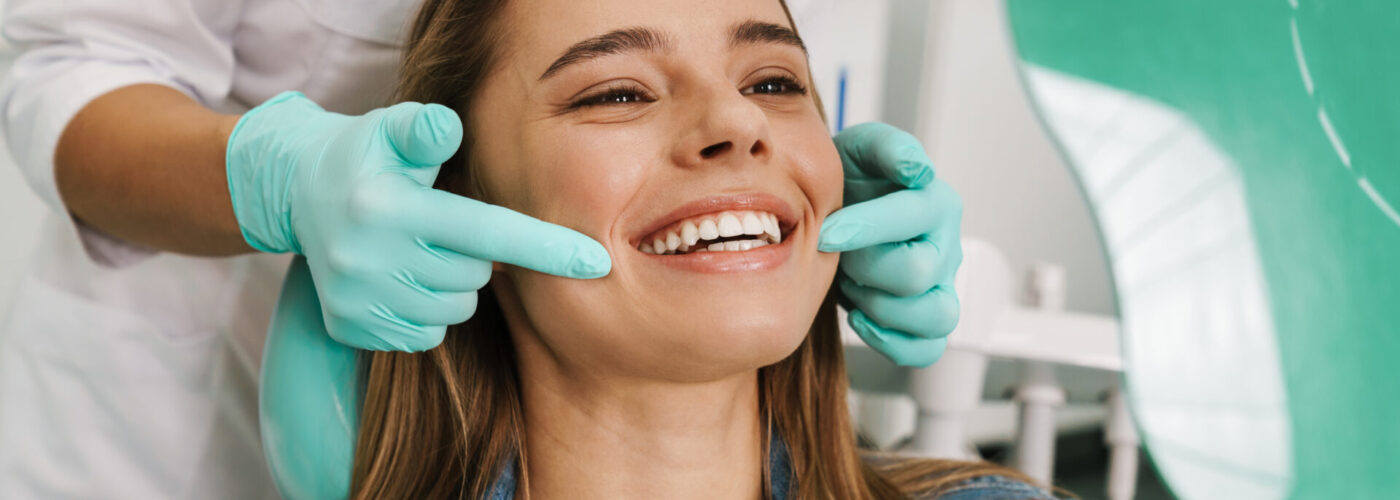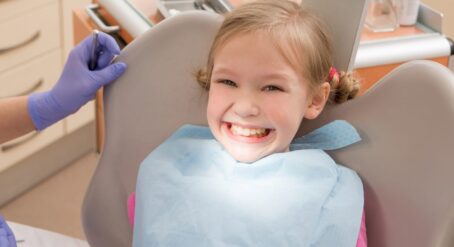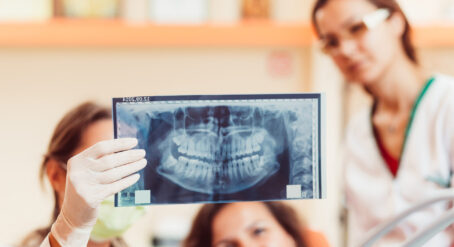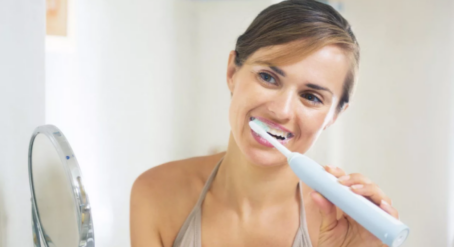Having crooked teeth as an adult can be a confidence-zapping issue. Whether you had your teeth treated in your youth youth (but they’ve shifted over time), or have always been bothered by it, many people feel as though their teeth are getting in the way of their smile. Despite what social media might have you believe, crooked teeth are still quite common.
The bad news is, if left untreated, crooked teeth are likely to get worse because even in adults, teeth and jaws are constantly changing. The good news is, they are treatable. Depending on the extent of treatment required, you could be looking in the mirror at a perfect smile in anywhere from 6 – 24 months.
What causes crooked teeth in adults?
There are a number of factors that can cause crooked teeth in adults, from genetics to long-term misalignment and even injury. Factors that cause crooked teeth can include:
- Over-retained baby teeth
- Overcrowding of the mouth during childhood
- The size of your jaw (Fun fact: evolutionarily speaking, our jaws are thought to have become smaller due to our reliance on softer foods than our forebearers)
- Bite problems (teeth and jaw misalignments) that have grown worse over time, creating further crookedness, as existing crooked teeth move and change
- Facial injuries such as knocks to the head or face, which may have resulted in tooth loss or displacement
- Poor nutrition and dental care can also lead to decay/cavities or gum disease, resulting in movement of teeth and crookedness
Do crooked teeth get worse with age?
Yes – just like the rest of our body, our teeth and bite will change as we age. In fact, your teeth are never really set in stone and will naturally shift over time – which is the reason most orthodontists will encourage you to regularly wear your retainer for as long as possible after your treatment has finished. There are a number of factors that influence how much and how quickly age-related dental changes develop, but it is inevitable that some change will occur.
What this means is most of us, regardless of whether we have had orthodontic treatment when we were younger, will probably find that our front teeth will become crooked to some degree as we get older. Once your lower front teeth “slip” past each other the amount of crowding tends to worsen more quickly and then you are also likely to notice changes in the position of the opposing top teeth as well. Problems like gum recession and gum damage can occur over time if crooked teeth are left untreated. This can lead to a wide variety of factors, from further misalignments to gum disease and bad breath if you struggle to floss or clean your teeth properly.
Do crooked teeth affect speech?
Crooked teeth are more than just a cosmetic problem. Teeth are a vital element to speech and articulation. Crooked teeth can form lisps or whistling while speaking. For example, some particularly bad bites can affect the pronunciation of certain sounds & words.
Other crooked teeth problems
Teeth can be crooked in a number of ways and to varying degrees. But even mild crookedness can start problems that can escalate. Some of these problems can include:
- It’s more difficult to keep your teeth clean. Because of obscured and overlapping teeth, it can be difficult to keep teeth clean if the mal-alignment is severe. Plaque build-up on the teeth and gums allows bacteria to multiply, and if left unchecked, will cause damage to the teeth and gums.
- Excessive teeth wear. Crooked teeth may wear unevenly and potentially wear faster in certain spots where they cross and meet with other teeth.
Can crooked teeth be straightened?
The good news is that crooked teeth can be straightened. There are a number of straightening options available for adults, but the important thing to remember is that for the best long-term results, you should be seeing a specialist orthodontist who can create a treatment plan for you that not only straighten your crooked teeth, but also properly align your bite and jaw if required. For some patients, bite correction may be even more important that straight teeth!
Straightening options for adults with crooked teeth
While the best form of treatment will depend on your unique circumstances, there are now a lot of different options available for adults who are seeking treatment, including:
- Ceramic braces. Ceramic braces are the perfect approach for those looking for not only top-line orthodontic care, but a subtle way to straighten teeth. Though they work the same as metal braces, the brackets are tooth coloured, making them less visible.
- Lingual braces. Lingual braces are practically invisible. Sitting on the back of the tooth rather than the front, lingual braces work in much the same way as standard braces but cannot be seen. However, as they sit closer to the tongue, lingual braces take a bit more getting used to—both in terms of eating and speech.
- Clear aligners. Clear aligners are thin, moulded plastic that fits accurately to your teeth. Although this is something to consider, as they won’t work if the aligner is removed too often.
- Metal braces. Metal braces are the traditional sort of braces, and now are a cost-effective way for children and adults to receive less costly orthodontic care. The work in the same way as ceramic and lingual braces, and the treatment time should be much the same. Though modern metal braces aren’t the same as they used to be – the brackets are smaller and are often still one of the best solutions for your smile.
Can you realign your teeth as an adult?
Yes, you can straighten and realign your teeth as an adult. The main reason that we often recommend children and teens undergo orthodontic treatment early is because it is often more efficient and, in general, very easily accepted by younger patients. However, you can still successfully change your smile as an adult. The other good news is that there is no age limit! As long as the teeth and gums are healthy, teeth can be aligned at any age.
Can clear aligners straighten crooked teeth?
The short answer is yes, but with a big asterisk. Clear aligner treatments like Invisalign®, Spark® and 3M Clarity, are popular choices for people who have minor malocclusions. That means that if you only have minor corrections to be made to your smile then they can be a suitable option for you. However, there are limitations and clear aligner treatment may not be suitable for those with more severe malocclusions which require complex tooth or jaw movements.
How long does it take for crooked teeth to straighten?
It can take anywhere from six months to two years to properly straighten your crooked teeth. It will depend on how many teeth need to move, the severity of their crookedness and whether the alignment of your jaw needs to be fixed. For many people, straightening the appearance of your front teeth is the easy part, with the following months of treatment providing you with necessary fine detailed adjustments to ensure your treatment is provided to the highest possible standard and to help ensure a healthy bite and better longevity of your treatment outcome.
For this reason, most orthodontists will advise against limited treatment focussing purely on the front teeth only and instead take a whole mouth approach to giving you your best smile.
Can veneers straighten crooked teeth?
No, veneers cannot straighten teeth. They are a cosmetic restorative dental treatment, designed to disguise minor shape or alignment issues of the front teeth. It is often much safer (and potentially less costly) for significantly crooked teeth to be straightened with orthodontic treatment. Your general dentist and orthodontist can both provide specific opinions for your individual needs.
Can a retainer fix crooked teeth?
No, a retainer can’t fix crooked teeth. While they can look similar to clear aligner treatment, a retainer is a passive appliance designed to hold your teeth in their corrected positions and guard against shifting over time. As a retainer is generally not an active appliance, it cannot fix your crooked teeth.
The best way to understand how your smile can become its best is to make an appointment with an orthodontist. You can search for a registered specialist orthodontist near you using our Finder Tool.











I’ve got gaps on my top teeth and a little one my bottom and the last time I went to the dentist she said I need braces because I had an over bite so idk and it’s not necessarily a problem however I don’t really like the way it looks especially at the top because when food gets stuck between them it’s very irritating but I means that’s normal however I just want like a nice straight “perfect” smile and I was going to opp for invisline cause it’s the cheaper option however knowing me I’m probably going to forget and the hassle to take them out when u eat and all so braces seem like the better option for myself just like this time